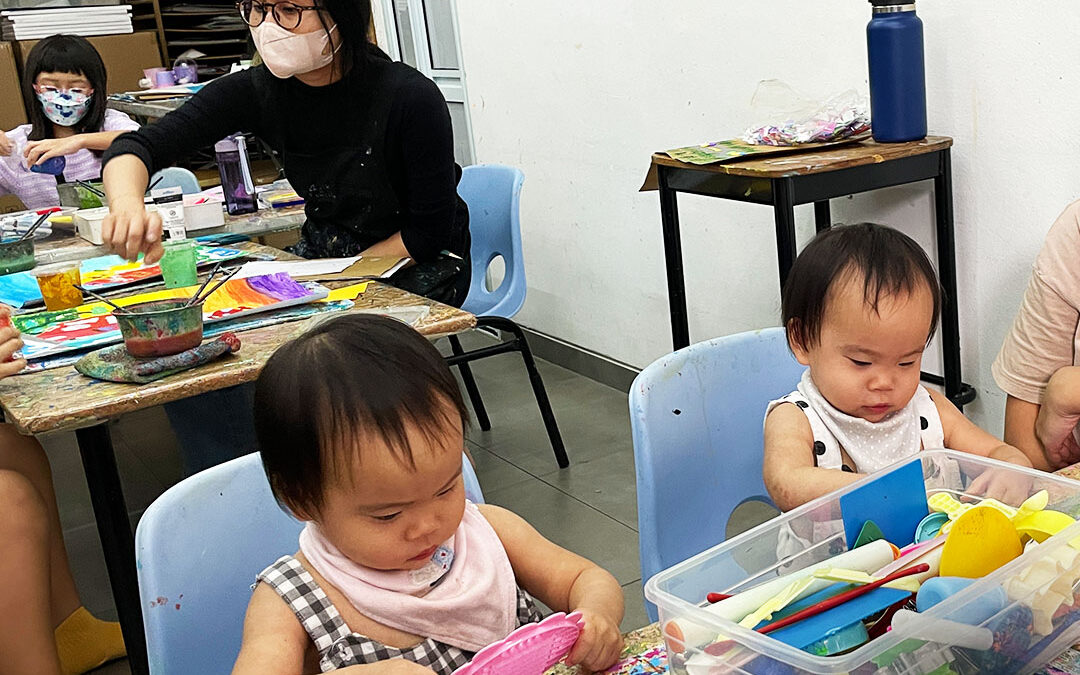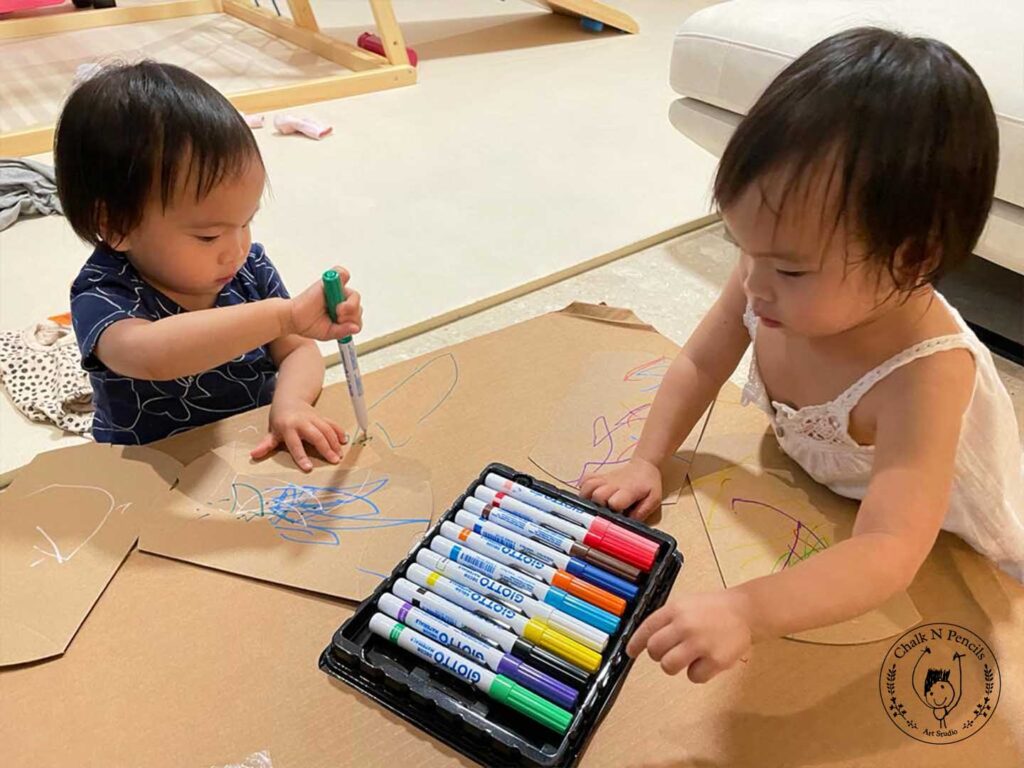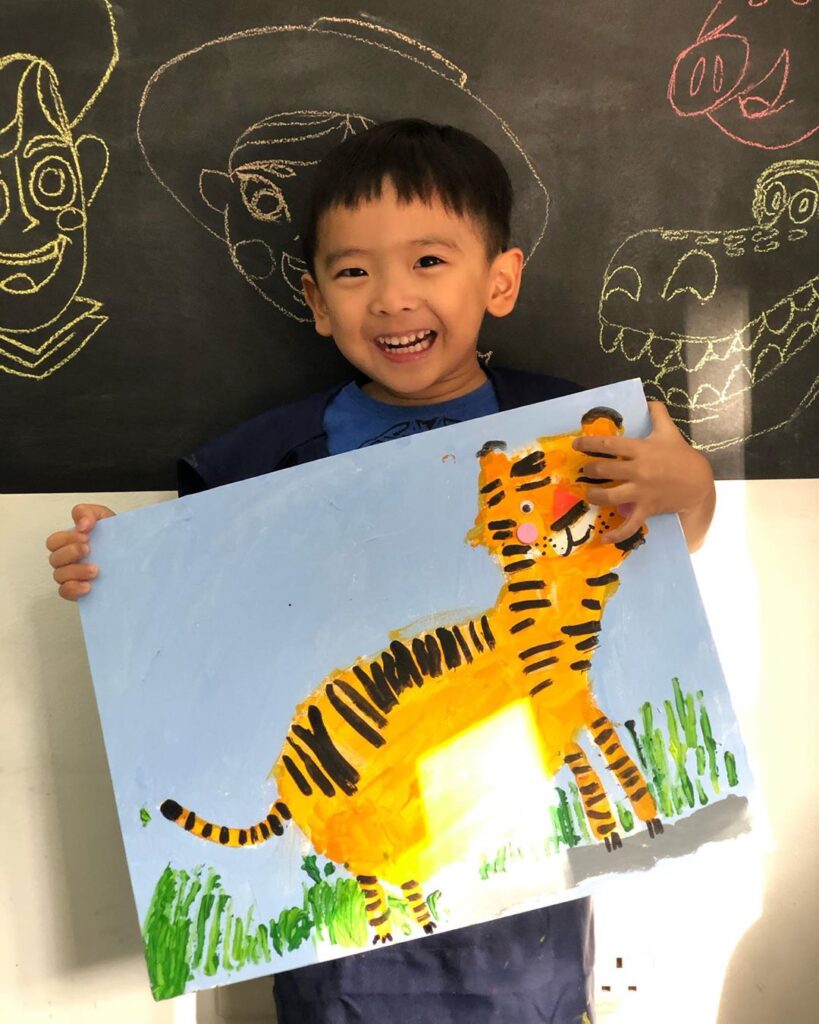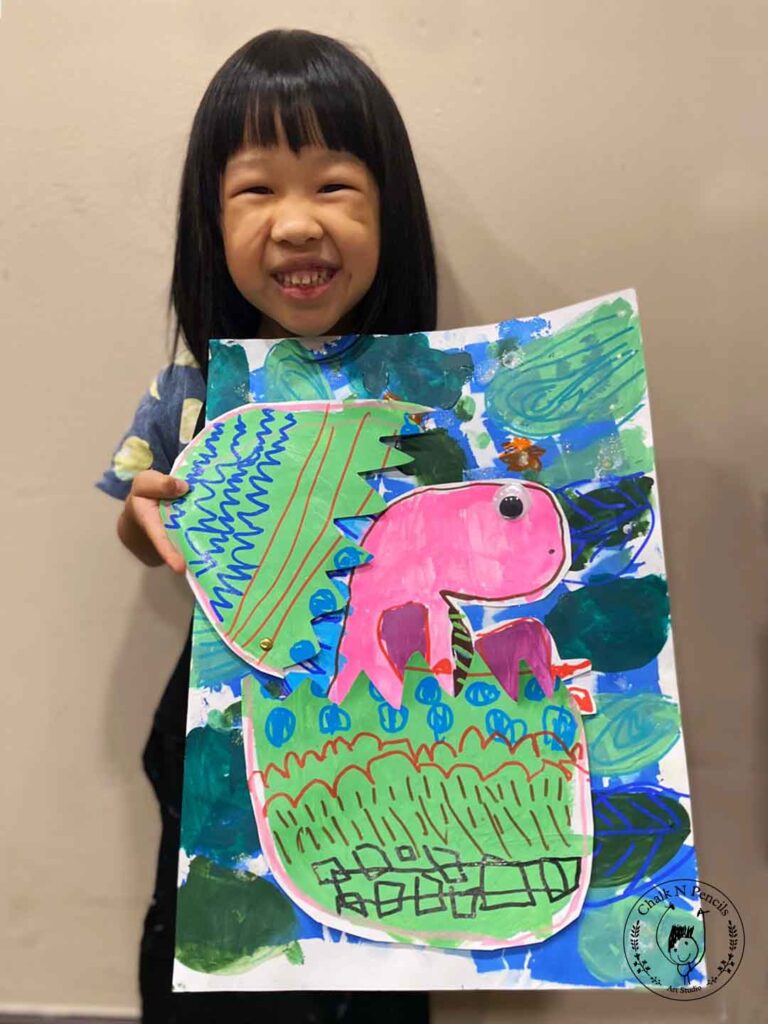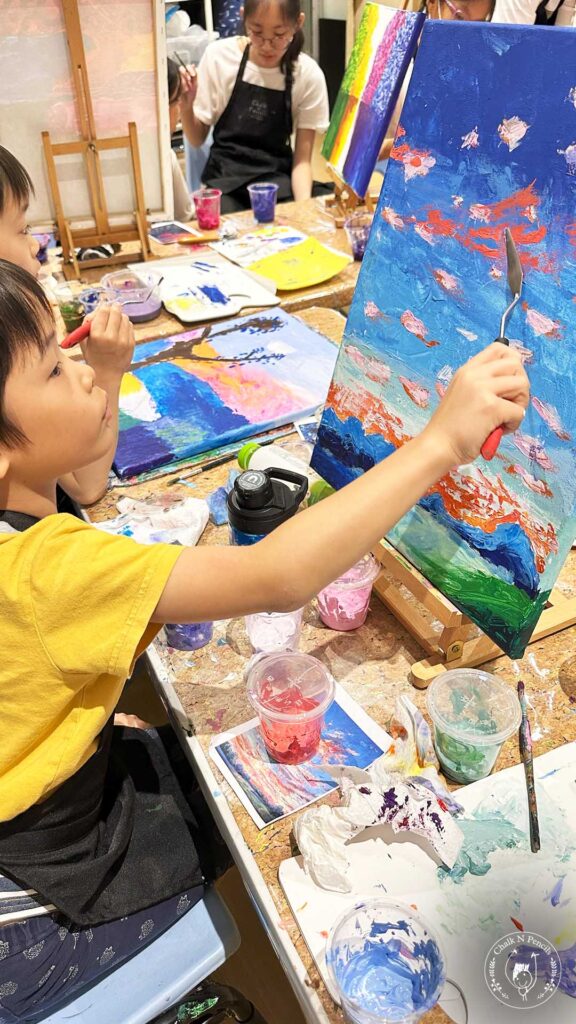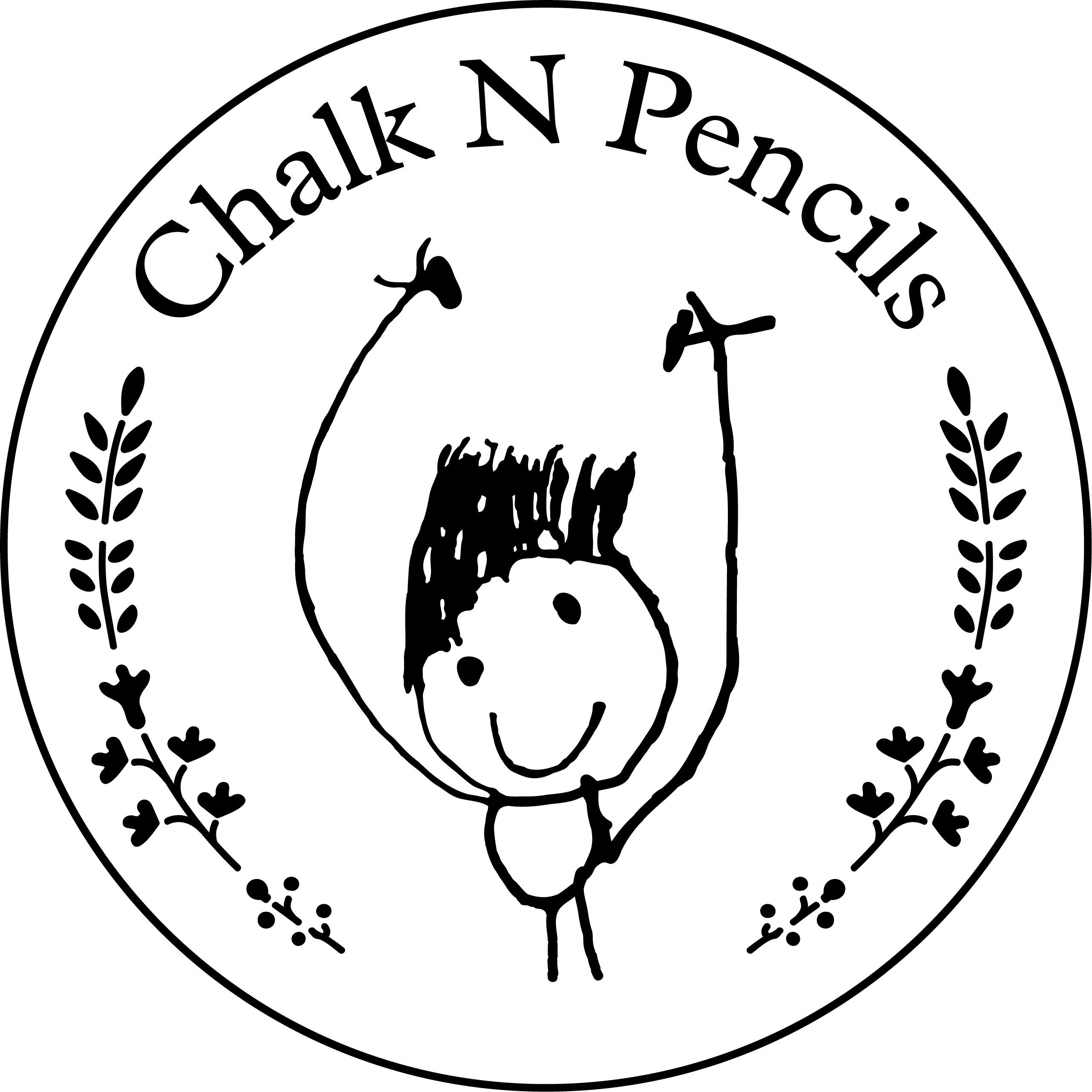Embarking on the artistic journey with your child is not just about fostering creativity but nurturing their holistic development. Creative activities are a playground for cognitive, physical, social, and emotional growth. This article explores how supporting artistic development in children can play a pivotal role in this enriching journey.
Art in Holistic Child Development: More Than Just Creativity
Art is more than just a medium for expression; it’s a tool for comprehensive development. Supporting artistic development in children involves encouraging them to engage in creative activities, which refine their motor skills and enhance their cognitive abilities. Art teaches them about colours, shapes, and textures and helps them develop observational skills crucial for scientific thinking. Socially, it’s a lesson in sharing and cooperation, while emotionally, it offers a medium for them to express feelings that might be hard to verbalise. We help boost their self-esteem and encourage healthy emotional developmentby valuing their creativity.
The Stages of Artistic Development in Children
Recognising the various stages your child goes through is crucial in supporting artistic development in children:
Tips and Strategies for Supporting Artistic Development
Integrate easy and enjoyable art activities that align with each stage of artistic development. For instance, encourage scribbling with different colours and textures or explore nature and then let them draw what they see, enhancing their observational skills and creativity.
- Provide a Rich Environment: Offer a variety of art supplies and a dedicated space for creativity. Display their artwork to celebrate their efforts, and consider setting up an art corner at home for them.
- Talk About Their Art: Engage in conversations about their artwork. Focus on open-ended questions to encourage them to express their thoughts and feelings through their creations.
- Focus on Process Over Product: Emphasize the experience of creating rather than the outcome. This approach fosters a sense of exploration and self-expression, which is crucial for artistic development.
- Art Appreciation: Expose your child to various forms of art. Discuss different artworks and encourage them to share their interpretations. You can find engaging art appreciation activities for children to stimulate their interest further.
Frequently Asked Questions on Supporting Children’s Artistic Development
1. How can I effectively nurture my child’s artistic skills at different stages of development?
Each stage of your child’s artistic development requires different types of support. For example, during the scribbling phase, provide various drawing tools like crayons and markers to encourage motor skill development. In the pre-schematic and schematic stages, engage in conversations about their drawings to understand their symbolic representations. As they move towards realism, they focus on nurturing their observational skills and offer more structured art lessons to refine their techniques. Tailoring your support to each stage will help effectively facilitate their artistic skills.
2. What are some creative ways to introduce my child to various art forms?
Start with simple activities like visiting art galleries or museums, where they can see diverse art forms. Engage in art-related storytelling by discussing your feelings about different artworks. At home, you can introduce various mediums like clay, watercolours, or collage-making. Online resources or local community events often offer workshops or interactive sessions in different art forms, providing a fun and educational experience for your child.
3. How can I help my child deal with frustration during their artistic endeavours?
Artistic frustration is significantly common as children’s self-awareness and desire for perfection grow. Please encourage them to see mistakes as part of the learning process. Introduce them to stories of famous artists who faced similar challenges. Offer constructive feedback and celebrate their efforts, regardless of the outcome. Sometimes, taking a break and revisiting the art piece later helps alleviate frustration.
4. My child doesn’t seem interested in art. How can I foster an appreciation for it?
You can cultivate an interest in art subtly. Incorporate art into activities your child already enjoys. For children who love stories, explore art-related books or encourage them to create illustrations for their favourite novels. You can also introduce art through technology, using interactive art apps or educational games that include art-making. The goal is to ensure art is enjoyable, not a chore.
5. How can I balance guiding my children in art and allowing them creative freedom?
Support your child in their artistic journey without being overbearing. Provide guidance and resources when they seek it, but allow them to lead. Encourage them to explore and experiment. Create a space where they can create freely, without concern for messes or rules. Celebrate their unique style and support their self-expression, even if it diverges from conventional artistic norms.
Conclusion
Supporting your child’s artistic development is a journey filled with colours, shapes, and imagination. It’s a path that nurtures their creativity and contributes significantly to their overall growth. Remember, every child is unique in their artistic expression and development. As parents, embracing this uniqueness and providing a supportive environment is crucial in fostering their creative talents.
Consider exploring art classes, such as those offered by Chalk N Pencils, to nurture their artistic abilities further and witness the joy and growth that comes with it. Book a trial class with us today!
Exclusive Offer for Our Readers!
$5 off a trial art class at Chalk N Pencils when you click through this link and send us a message on WhatsApp.
Join Our Community
Eager to start your artistic journey? Join our community of artists in Singapore today! Whether you're looking to learn, create, or simply enjoy the company of fellow art enthusiasts, Chalk N Pencils is the place to be.

